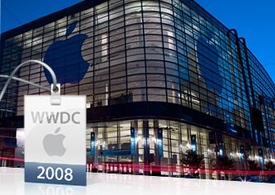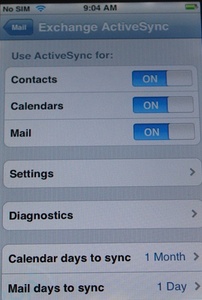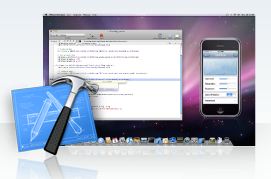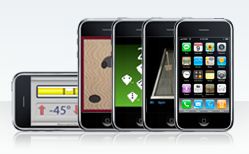 By now, everybody in the known universe has offered up their iPhone 2.0 predictions, prognostications, forecasts, and prophesies. We even think that NASA’s Phoenix Lander may have found an iPhone wish list on Mars, but we’re not sure.
By now, everybody in the known universe has offered up their iPhone 2.0 predictions, prognostications, forecasts, and prophesies. We even think that NASA’s Phoenix Lander may have found an iPhone wish list on Mars, but we’re not sure.
As you can imagine, iPhone 2.0 speculation has reached a fever pitch again — just like iPhone 1.0 did last June — with ideas ranging from the obvious “duh” to “out there”, just like Mars.
For our own amusement, and yours, we’ve sifted through wish lists and predictions to come up with what we think will happen, what may happen, and what’s still to come for iPhone hardware, features, and applications.
You’ll be able to judge the pundits on Monday, after Steve Jobs delivers the keynote speech at the Worldwide Developers Conference. Until then, if you see something missing, add it to the comments. Because there is one thing we’ve learned: Everybody has a special feature or application they’d like to see on the new iPhone, and we can’t predict ’em all.
What will happen
(in no particular order)
 First off, you can expect what everybody has been talking about for months — 3G support for significantly faster data transfers, enterprise support (including Microsoft Exchange ActiveSync), and third-party applications. These are what the iPhone 2.0 hubbub is about in the first place.
First off, you can expect what everybody has been talking about for months — 3G support for significantly faster data transfers, enterprise support (including Microsoft Exchange ActiveSync), and third-party applications. These are what the iPhone 2.0 hubbub is about in the first place.
GPS navigation. It just makes sense to include real GPS capability, especially since some of the new third-party applications will be written for location-based services.
An improved camera. Most likely, it will be 3 megapixels (up from 2.1) and may be front-facing (see video below). It’s doubtful it will feature zoom functionality or a flash.
Video. This is a tough one and can go either way. Since the iPhone’s optics will be improved, and third-party apps are coming that can take advantage of this, we figure iPhone 2.0 will have some sort of video recording capability, albeit version 1 quality. May include video calling.
Improved battery life. An absolute must. Question is: How much better? 3G, GPS, and video recording are power hogs. A removable battery would be nice, too, but that’s doubtful. It would add unseemly VPLs — visible part lines (not panty lines, guys).
Mobile Me. There will be some sort of tie-in between the iPhone and the old .Mac service, which is expected to be re-branded to something like Mobile Me. This will be Rev. 1 with — hopefully — a true growth path into the future (my own personal cloud, pretty please?).
Increased storage. 16 gb and 32 gb. For removable storage, see below.
Cut and paste. With the addition of third-party apps, cutting and pasting small amounts of text becomes even more necessary.
What may happen
 (in no particular order)
(in no particular order)
Removable storage. Would be nice to pop in a 2 gig SD card to store movies, TV shows, music, or video recording.
New casing. With appropriate design-language tweaks. Slightly slimmer.
Haptic glass. The iPhone user base is split on the usability of the touch screen. Some people don’t mind the lack of feedback (I’m in this camp), others hate it and yearn for a keyboard ala the BlackBerry. Haptics, which give the user slight feedback when a soft key is “pressed”, will be the next evolution of the iPhone’s touch screen and user interface.
Scanning capabilities. Improved optics will also mean bar code scanning, which third-party application developers want. It may not be turned “on” out of the box but the capability will be there for when the apps arrive.
MMS. One feature found on many cell phones but missing from the iPhone is the ability to send multimedia files directly to other phones — no need to work around by using email. It would be nice to have but, for me, isn’t critical.
Stereo Bluetooth support. For iPod playback. It just makes sense.
 What’s still to come
What’s still to come
The MacTablet. Rumormongers, start your engines. You’ll be driving to Mac World in January 2009 for the introduction of a mobile Internet device that’s slightly larger than an iPhone or iPod Touch but smaller than the 13-inch MacBook. Hopefully, it won’t be Newton 2.0.
Mobile Me Over-the-Air. No need to sync iPhone 2.0 (or 3.0?) to a computer and iTunes again. Includes syncing for iCal, Address Book, notes, and third-party apps.
Running multiple programs in real time. I’m not sure where this stands, but it would be great to have an IM client running, switch to the phone to make a call, and return to instant messaging without having to log-in again.
Flash support. People want it now, but it doesn’t appear that Flash for the iPhone is ready yet (at least in the eyes of Steve Jobs).
And: Reality and people tagging, augmented reality, reality recognition, distributed mobile games, credit cards and paperless receipts, digital shopping with physical shopping, location-based services, ad hoc social networking.
Miscellaneous features
Auto-answer, voice dial, voice-to-text for hands-free texting, iPod enhancements (like song ratings, song skip forward, backward without re-enabling the iPhone), accessible file system, audio recording
 Applications
Applications
(again, in no particular order)
Notes. That sync between the iPhone, computer, and Web. This can be an Apple OS feature, or a third-party app.
Tasks. Same as notes above.
IM. This can be iChat by Apple or a cross-platform third-party app like Adium.
Clients for existing desktop programs. For me, that includes Evernote (or Yojimbo, Journaler, SoHo Notes), OmniFocus, Bento, NetNewsWire. Others have mentioned clients for Delicious Library and iLife and iWork.
Games. Not Pac Man ported to the iPhone. These should be serious games developed specifically for the iPhone.
All other apps. Over time, we’ll see apps for secure banking, health and fitness, biometrics, social networking, social media (blogging and micro-blogging clients), home automation, eBooks, gaming, dating, remote controls, dedicated RSS readers, Skype, and anything you’d care to add to the list.
Photo credit: of iPhone 2.0 SDK, Engadget
